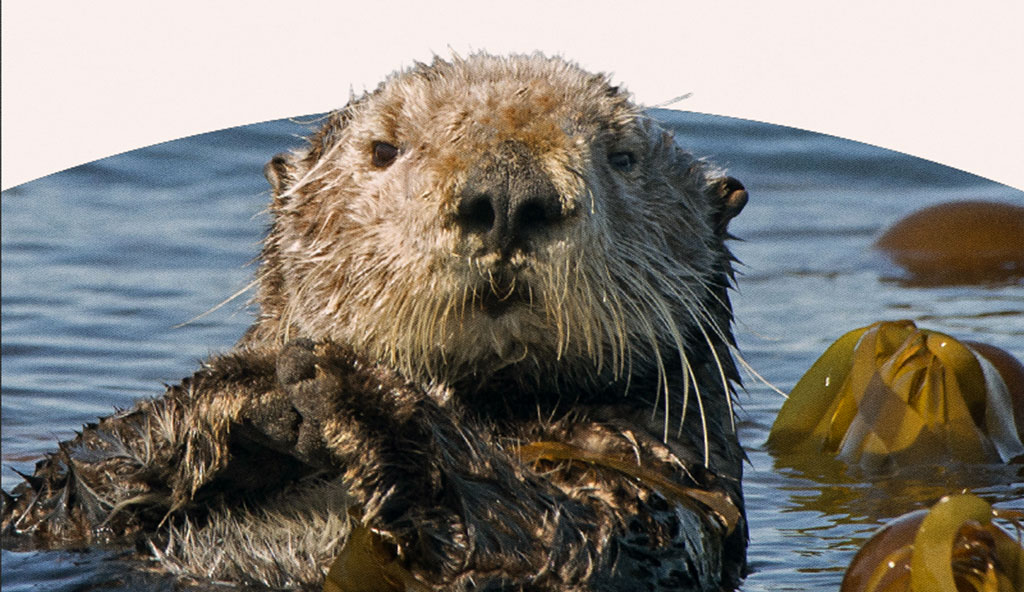In 1986, James Buchanan won the Nobel Prize in economics for changing the way we think about politics. Buchanan’s key insight was that economists should use the same methods to analyze political behavior as they do to understand economic behavior. He helped establish a new form of economic analysis known as public choice theory, which Buchanan described in just three words: “politics without romance.”
Public choice theory, Buchanan argued, “models the realities rather than the romance of political institutions.” Politicians, bureaucrats, and voters, like people engaging in everyday market exchanges, are motivated primarily by their own self-interest, rather than the public interest.
This was a simple insight, but it had important implications. There had long been a certain degree of romance in politics, even among economists. Politicians were modeled as selfless public servants promoting the public’s interests, rather than their own. Bureaucrats advanced their agencies’ missions, not their own budgets or authority. And voters sought to improve the public good, not to extract political favors for their personal benefit. By the time Buchanan was awarded the Nobel Prize, this idealized view of politics was no longer seen as a valid approach to economic analysis. “The romance is gone,” Buchanan said in 1979, “perhaps never to be regained.”
Politics is not the only area where we are subject to romantic tendencies. Environmentalism arguably elicits even greater romantic sentiments. Notions of a harmony with nature, pristine wilderness, and “Mother Nature” are prominent in modern discussions of environmental issues. Related ideas such as the balance of nature have dominated the science of ecology. And many environmental policies are based on the idea of restoring ecosystems to a historic baseline or preserving a perceived balance to nature.
But the romance of environmentalism is slowly fading, too. Today, there is growing skepticism about such idealized undertones to environmentalism, and in turn, to environmental policy. A new generation of ecologists is challenging the idea of an inherent balance in nature. Moreover, scientists are concluding that human action cannot easily be separated from the natural world. Research in paleoecology and other fields is revealing that landscapes once thought to be uninfluenced by humans were in fact dramatically affected by indigenous peoples. Conservationists are rejecting the idea of pristine nature as a worthy or practical conservation goal and adopting a more nuanced vision of the environment that includes human action. Scientists have even proposed the concept of the Anthropocene—the “age of man”—as a new geologic epoch to reflect the magnitude of human influences on the natural world.
These realities imply a very different—and less romantic—lens for viewing environmental challenges. Once we accept that nature is dynamic and profoundly shaped by human action, we can no longer view environmental problems as simply the consequence of human violations on the balance of nature, nor can they be solved by separating the natural environment from human influences. The notion of the Anthropocene suggests that doing so is impractical or even impossible. Instead, in the age of the Anthropocene, environmental problems become questions of how to resolve competing human demands on an ever-changing natural world.
In the age of the Anthropocene, environmental problems become questions of how to resolve competing human demands on an ever-changing natural world.
Moreover, science alone cannot resolve most environmental issues. Science does not tell us which ecological states are “right” or which environmental policies are best. Many ecological concepts are themselves normative; they offer little guidance for resolving conflicts over competing human values and preferences. Thus, most environmental problems are fundamentally questions of human values—of what landscapes we prefer, what elements of the natural world we want to preserve, and what aspects of nature we want, or do not want, around. This is “environmentalism without romance.”
The Balance of Nature
The romance of nature has deep historical roots. In particular, the idea of an equilibrium or balance of nature has long dominated environmental thought. George Perkins Marsh, one of America’s first environmentalists, expressed the prevailing ecological view of the 19th century: “Nature, left undisturbed, so fashions her territory as to give it almost unchanging permanence of form, outline, and proportion.” Any changes that do occur are so slow that for all practical purposes nature “may be regarded as constant and immutable.” As long as it remains free from man’s disturbances, nature “would have been constant in type, distribution, and proportion, and the physical geography of the earth would have remained undisturbed for indefinite periods.”
In the early 20th century, the nascent field of ecology eventually rejected the notion of a pure, balanced nature. In place of Marsh’s vision, early ecologists adopted the idea of ecological succession: Even if nature could be affected by drought, fires, and other natural forces, it would always progress through various stages of succession until it reached a final “climax” state. Led by Frederic Clements, ecologists later expanded upon this line of thinking with the idea that entire plant communities evolved as collective, complex “superorganisms” of their own. These superorganisms eventually evolved into a mature adult form, which was ultimately determined by the local climate.
The idea of an equilibrium climax or “superorganism” left little room for humans other than as a disrupter of nature’s final balance and had a far-reaching impact on conservation and environmental values in the 20th century. “The notion of a superior climax state gave a scientific validation to the conservationist’s case against the machine and the farmer,” writes environmental historian Donald Worster. The climax state served as “the yardstick by which man’s intrusions into nature could be measured.”
In the latter part of the 20th century, however, an internal critique emerged. Researchers began to discover that the equilibrium models theorized by earlier ecologists did not adequately explain the dynamic interactions that occur within ecosystems. A 1973 study of New England’s temperate forests by William Drury and Ian Nisbet found that ecological succession did not lead anywhere in particular and never reached a point of equilibrium. Increasingly, ecologists began to focus on “disturbances,” both natural and man-made, as part of an ever-changing mosaic of environmental conditions.
In his influential 1990 book, Discordant Harmonies: A New Ecology for the 21st Century, ecologist Daniel Botkin documents how the conventional view of a balance of nature apart from human action is unsupported by evidence. According to Botkin, “nature undisturbed is not constant in form, structure, or proportion, but changes at every scale of time and space.” To the extent that there is a harmony of nature, it “is by its very essence discordant,” he writes, “leading not to a simple melody but to a symphony at some times harsh and at some times pleasing.” This sharply contrasts with ecologists’ traditional faith in a predictable endpoint of succession, or what Botkin characterizes as the belief “that nature’s melody leads to one final chord that sounds forever.”
The Anthropocene
In addition to recognizing that there is no balance of nature, ecologists are finding that humans have dramatically shaped ecosystems that we once considered pristine or relatively untouched. Recent evidence suggests that the American wilderness explored by Columbus, Lewis and Clark, and others had already been dramatically shaped by humans. As ethnologist Dale Lott explains, Lewis and Clark were “exploring not a wilderness but a vast pasture managed by and for Native Americans.”
Today, some archaeologists believe that humans may be responsible for the extinction of large mammals across several continents more than 10,000 years ago. Humans may also have affected the global climate for thousands of years. Carbon dioxide emissions increased significantly 8,000 years ago as people began clearing and burning large swaths of forests for agriculture, and methane emissions increased 5,000 years ago as humans began rice farming. William Ruddiman, a paleoclimatologist from the University of Virginia, estimates that these early anthropogenic effects may have been large enough to prevent another ice age from occurring.
Emma Marris succinctly describes the present-day reach of human influences in her 2011 book, Rambunctious Garden: “Every ecosystem, from the deepest heart of the largest national park to the weeds growing behind the local big-box store, has been touched by humans.” Marris argues that conservationists should reject the idea of pristine wilderness and adopt a “more nuanced notion of a global, half-wild rambunctious garden, tended by us.” Likewise, in 2012, a group of scientists led by Peter Kareiva, former chief scientist for the Nature Conservancy, criticized conservationists for viewing nature apart from people. The scientists urged others to embrace “a new vision of a planet in which nature—forests, wetlands, diverse species, and other ancient ecosystems—exists amid a wide variety of modern, human landscapes.”
In another 2012 essay, Kareiva and Michelle Marvier proposed a new framework of conservation science. “In the traditional view of conservation,” they wrote, “people play one of two roles: The vast majority of people are a threat to biodiversity, and a relatively small number—mostly Western biologists—act as biodiversity’s protectors and, one hopes, saviors.” This is problematic, they say, because “conservation is fundamentally an expression of human values.” Kareiva and Marvier’s conception of conservation science seeks “a more integrative approach in which the centrality of humans is recognized in the conservation agenda.”
The Role of Science
Although ecologists are discovering that the natural world is characterized by perpetual change and dramatic human influence, environmental policies remain based on assumptions of equilibrium and pristine nature. As Botkin writes: “If you ask an ecologist if nature never changes, he will almost always say no. But if you ask that same ecologist to design a policy, it is almost always a balance of nature policy.” He goes on to say that “whether or not environmental scientists know about geological time and evolutionary biology, their policies ignore them. It is strange, ironic and contradictory.”
If there is no true balance of nature to which we must restore environmental conditions, and if there is no pristine nature untouched by human action, then on what basis should we determine environmental policies?
If there is no true balance of nature to which we must restore environmental conditions, and if there is no pristine nature untouched by human action, then on what basis should we determine environmental policies? There is a growing recognition that science alone can be a lousy guide to environmental policymaking. Many key ecological concepts have normative foundations. For instance, as ecologist Robert Lackey describes, there is no universal definition of ecosystem health, yet many environmental policy issues are based on the idea of restoring or improving the health of ecosystems. Lackey calls ecosystem health a “value-based ecological concept” based on subjective assumptions that “masquerade as science.” Ecosystems have no preferences; people do.
Entire ecological sub-disciplines, Lackey writes, “embrace normative science postulates as the core of their trade, maintaining that biological diversity is inherently good, extinction of populations and species is inherently bad, ecological complexity is inherently good, evolution is good, and biological diversity has intrinsic value.” In reality, Lackey writes, “most scientific information is of a fine scale and narrowly focused and thus only indirectly relevant to many ecological policy questions.” Thus, it is political institutions that must “balance competing values and preferences, a process in which the role of scientific information is limited.”
The Central Question
Once we accept that nature is profoundly shaped by and connected to human action, we must consider environmental problems through a different lens. In this view, environmental problems cannot be thought of as simply the consequence of human violations of the balance of nature, nor can they be solved by separating natural systems from human influence.
Instead, environmental problems become questions of how to resolve competing human demands on an ever-changing natural world. Farmers want to use streams to water their crops, while anglers and rafters want to use the water for habitat and recreation. Ranchers want to use open landscapes to graze cattle, while environmentalists want to use them for wildlife habitat. The central environmental policy question, then, is this: Which institutions best allow humans to resolve their diverse and ever changing demands on an equally dynamic environment?
Protecting the environment is not simply a matter of preventing human violations on nature’s balance. It involves making trade-offs, and doing so in a way that recognizes that nature is as ever changing as the demands that humans place on it. How those trade-offs are made in a world of diverse and conflicting human values ought to be the central environmental question in the age of the Anthropocene.




